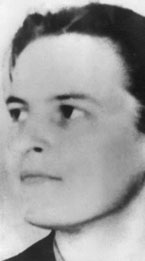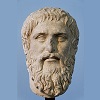5.4: Elizabeth Anscombe
- Page ID
- 15306

Anscombe argues that the concept of intention is central to our understanding of ourselves as rational agents. The intentions with which we act are identified by the reasons we choose to act the way we do. Various kinds of movements occur in the world, but only some are counted as the behavior of intent. So only some of this behavior is counted as action. An example might be inadvertent actions that happen when we sneeze, or sleep. We cannot explain why we twitch or jerk. But with most actions that people take it is justified in asking them, “Why did you do that?” Intent behind the action is crucial. We tend to think of unintentional actions with less judgment that intentional actions. We may accidentally trip someone because we move out of the way of our cat, who is weaving around our legs. But intentionally sticking out one’s foot and making sure the person trips? That is action with intent in the very action. And we cannot be wrong in our intent. We can be wrong in execution, but our we know what we intend to do, even it it does not happen.
Example
It will be useful to look at this article discussing some of Anscombe’s ideas in simpler format. Her dismay with granting Harry Truman an honorary degree is described here in simple ways that clarify her ideas about intent.
“If we want to understand other people’s behavior, then, not only can we not look at the causes of their behavior (since, for one thing, we cannot see inside their brains) but trying to do so would be a mistake. We need to know what they take themselves to be doing, how they understand their actions. And this knowledge does not come from observation of their own behavior. We know without looking what it is that we take ourselves to be doing, what we are trying to achieve”
description of Anscombe’s ideas from the Internet Encyclopedia of Philosophy: Elizabeth Anscombe
Key Takeaway
“The distinction between an expression of intention and a prediction is generally appealed to as something intuitively clear. ‘ I am going to be sick ‘ is usually a prediction; ‘ 1 am going to take a walk’ usually an expression of intention. The distinction intended is intuitively clear, in the following sense: if I say ‘ I am going to fail in this exam. ‘ and someone says ‘ Surely you aren’t as bad at the subject as that ‘, I may make my meaning clear by explaining that I was expressing an intention, not giving an estimate of my chances. ” Elizabeth Anscombe, Intention
Key Takeaway
“Now it can easily seem that in general the question what a man’s intentions are is only authoritatively settled by him. One reason for this is that in general we are interested, not just in a man’s intention of doing what he does, but in his intention in doing it, and this can very often not be seen from seeing what he does. Another is that in general the question whether he intends to do what he does just does not arise (because the answer is obvious); while if it does arise, it is rather often settled by asking him. And, finally, a man can form an intention which he then does nothing to carry out, either because he is prevented or because he changes his mind: but the intention itself can be complete, although it remains a purely interior thing.
All this conspires to make us think that if we want to know a man’s intentions it is into the contents of his mind, and only into these, that we must enquire; and hence, that if we wish to understand what intention is, we must be investigating something whose existence is purely in the sphere of the mind; and that although intention issues in actions, and the way this happens also presents interesting questions, still what physically takes place, i.e. what a man actually does, is the very last thing we need consider in our enquiry.” Elizabeth Anscombe, Intention


